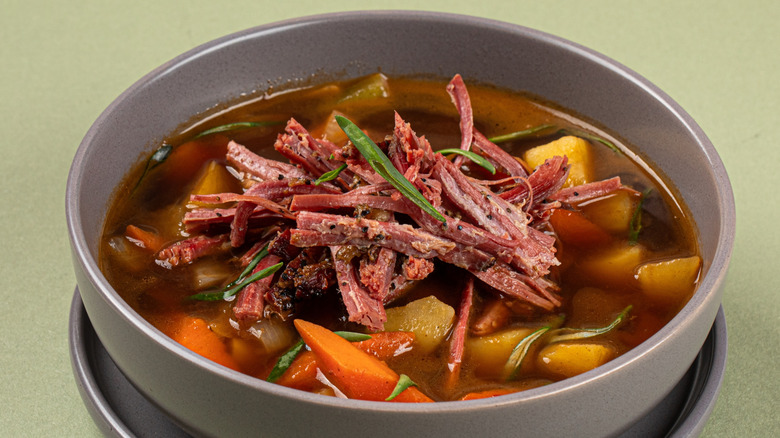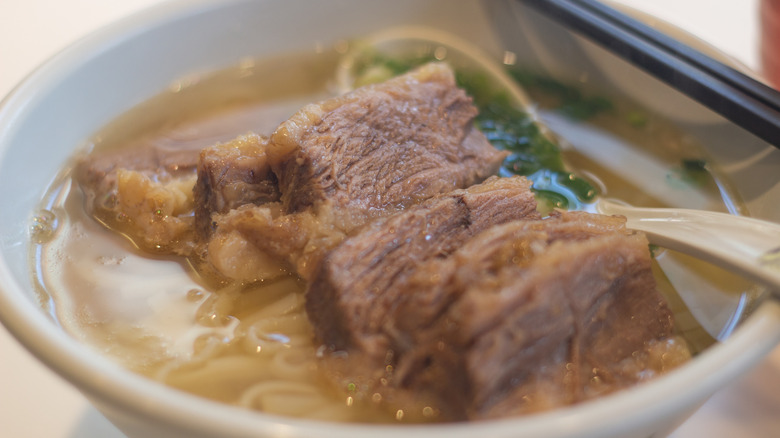The Step You Shouldn't Miss Before Adding Brisket To Soup
A popular smoked barbecue dish, classic beef brisket is often enjoyed in a melt-in-your-mouth brisket sandwich. However, swap the low and slow heat of a smoker for the low and slow simmer of a soup pot, and brisket can be the star of your next soup recipe. For some important tips on adding brisket to soup, including a crucial first step, Tasting Table spoke with Chef Billy Parisi, a classically trained culinary school graduate and food blogger. Instead of letting a simmering soup cook the brisket from raw, Parisi recommends blanching the brisket before adding it to soup.
"The purpose of blanching brisket ahead of time is to tenderize the meat so that it breaks down and can be easily cut and added to the soup," Parisi explains. "This will also help save some time so that it's not all done in the soup." Brisket is a notoriously tough yet flavorful cut of meat, necessitating tenderization, especially if you aren't going to smoke it for several hours. A 10-minute blanch will end up saving you more time than an overnight marinade, for example.
Another reason for blanching beef is to remove impurities, which Parisi refers to as "the foamy-like substances that collect at the top of the pot." By purifying brisket before adding it to soup, the chef argues that "the final soup broth will usually be clearer and purer." Plus, removing impurities will also enhance the umami-rich flavor of the beef itself.
Tips for blanching brisket and soup recipe pairings
If you're new to blanching, Parisi offers step-by-step instructions for this simple yet texture- and flavor-changing procedure. According to the chef, "Ensure that the water is at a rolling boil and that the pot is large enough to accommodate the amount of water needed to completely submerge the meat. Gently add it to the pot and cook it for 8 to 10 minutes." Instead of transferring meat directly from the blanching pot to the soup pot, Parisi advises you to "rinse it down so that it is cool to the touch" before cutting and adding it to the soup. By giving your brisket a breather, you pause the cooking, ensuring that the beef won't be overcooked or tough by the time it's done simmering for a second time in the soup.
Not only does blanching tenderize and purify brisket, but Parisi argues that it also fortifies the structure of the meat. He explains that blanching beef "tightens [it] up, making it easier to slice through so it won't shred apart." But that's not all; the chef adds that "this process helps it retain its structure for the next step, where the meat is braised again." Simmering in soup is the second braising process he refers to — a double-braise method common in the east and the west — which Parisi notes is typical for "dishes like pot au feu or corned beef." Additionally, you could also use braised brisket as a protein for restaurant-quality Vietnamese pho or ramen.

